|
Books Should Be Free Loyal Books Free Public Domain Audiobooks & eBook Downloads |
|
|
Books Should Be Free Loyal Books Free Public Domain Audiobooks & eBook Downloads |
|
Fiction |
|---|
|
Book type:
Sort by:
View by:
|
By: Jessie Graham Flower (????-1931) | |
|---|---|
 Grace Harlowe's Problem
Grace Harlowe's Problem
The four series follow Grace Harlowe and her friends through high school, college, abroad during World War I, and on adventures around America. The College Girls Series sees the friends part ways: Grace, Anne, and Miriam depart for Overton College, while Jessica and Nora attend a conservatory. The Eight Originals gather on holidays, but the seven College books focus on the three at Overton, along with new friends like J. Elfreda Briggs. They form Semper Fidelis, a society devoted to aiding less fortunate students at Overton. Following graduation, Grace rebuffs offers of marriage for "what she had firmly believed to be her destined work," managing Harlowe House at Overton. | |
By: Jim Kjelgaard (1910-1959) | |
|---|---|
 The Black Fawn
The Black Fawn
Bud Sloan was an orphan who had been 'sold out' of the orphanage to work on a farm once he'd been old enough to labor. The farm where he was to work was owned by an aging farmer and his wife who had raised a large family and were now left alone. One day, after his chores were done, Bud wandered into the woods nearby and with mouth agape, he noticed a newborn jet black fawn all alone and apparently confused in his new surroundings. Bud resolved that day that this baby fawn was just like himself, an orphan, and would be bound to him in spirit... | |
By: Joan Conquest | |
|---|---|
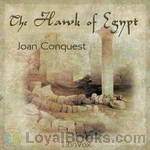 The Hawk of Egypt
The Hawk of Egypt
A tragic love triangle between a beautiful English girl, an English gentleman, and a half-English, half-Egyptian plays out among the ruins and under the desert stars of 1920s era Egypt. The saga ends, as all love triangles must, in tragedy upon the desert sands. | |
By: Joel Chandler Harris (1848-1908) | |
|---|---|
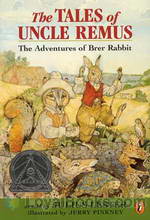 Uncle Remus
Uncle Remus
Bearing a striking resemblance to Aesop of Aesop's Fables fame, American author Joel Chandler Harris' Uncle Remus is also a former slave who loves to tell simple and pithy stories. Uncle Remus or to give it its original title, Uncle Remus: His Songs and His Sayings was published in late 1880 and received instant acclaim. The book was reviewed in hundreds of journals and newspapers across the country, leading to its immense success, both critical and financial. “Remus” was originally a fictional character in a newspaper column... | |
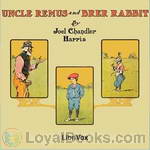 Uncle Remus and Brer Rabbit
Uncle Remus and Brer Rabbit
Uncle Remus' stories feature a trickster hero called Br'er Rabbit ("Brother" Rabbit), who uses his wits to slide out of trouble and gain the advantage over the slower witted other animals, many of whom are trying to eat him. Br'er Rabbit stories were mostly collected directly from the afro-american oral story-telling tradition and are said to be a direct interpretation of Yoruba tales of Hare. This book contains 11 unique stories and was the last one published before the author's death. (Introduction by Phil Chenevert) | |
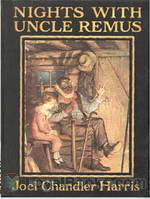 Nights With Uncle Remus
Nights With Uncle Remus
That the little boy loved Uncle Remus and his stories was so obvious that the tale-spinning sessions began drawing additional listeners. Daddy Jack, an old "Africa man" visiting from down-state; Sis Tempy, the strong chief of the mansion's servants; and Tildy, a young and pretty servant-girl - all found their way to Uncle Remus' rude cabin when their duties or interests permitted, to sit around the hearth and hear the wonderful tales of the animals, and foremost among them, Brer Rabbit and Brer Fox... | |
 The Tar Baby and Other Rhymes of Uncle Remus
The Tar Baby and Other Rhymes of Uncle Remus
26 of Uncle Remus's stories put into verse and song. With the exception of the Tar Baby story, they were all new to this publication of 1904 and cover a variety of humorous subjects from Adan and Eve (De Appile Tree) to Brer Rabbit's Gigglin' Place. There are also genuine Camp Meeting Songs and a Corn Shuckin' Song. | |
 Uncle Remus Returns
Uncle Remus Returns
Uncle Remus tells these 11 stories but to the son of the original "little boy" who is visiting his grandmother on the plantation. As always Uncle Remus can be relied upon to provide funny and pointed insight into human personalities through his story telling. These were all published in the Uncle Remus magazine from 1905 and 1906 and gathered together in this book by the author. Note that these stories are reflections of another period in time and some of the language used would definitely be considered rude and/or offensive now. In keeping with the desire to present the text as the author wrote it, nothing has been changed or edited. | |
 Kidnapping of President Lincoln, and Other War Detective Stories
Kidnapping of President Lincoln, and Other War Detective Stories
While detective work always makes for exciting stories, the circumstances under which the detective works play a huge role in the thrill. The stories in this collection follow detectives as they unravel mysteries in times of war, where danger awaits them at every turn. - Summary by Carolin | |
By: Johann David Wyss (1743-1818) | |
|---|---|
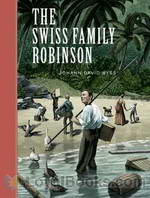 The Swiss Family Robinson
The Swiss Family Robinson
A beautiful story about survival, the Robinson family shows that one does not have to have the usual comforts of life in order to be comfortable and happy. It is also a story about family relations. The book showcases a family of six that has to start all over without the basic amenities that make life easier in the eyes of society. The idea of being in an island with no human neighbors is daunting to say the least. The family was shipwrecked and everyone else on the ship perished when they deserted the ship... | |
By: Johann Wolfgang von Goethe (1749-1832) | |
|---|---|
 The Sorrows of Young Werther
The Sorrows of Young Werther
The Sorrows of Young Werther (German, Die Leiden des jungen Werther, originally published as Die Leiden des jungen Werthers) is an epistolary and loosely autobiographical novel by Johann Wolfgang von Goethe, first published in 1774. The story follows the life and sorrows of Werther after he falls desperately in love with a young woman who is married to another. A climactic scene prominently features Goethe's own German translation of a portion of James Macpherson's Ossian cycle of poems, which had originally been presented as translations of ancient works, and was later found to have been written by Macpherson. (Introduction by Wikipedia and Barry Eads) | |
 Elective Affinities
Elective Affinities
Elective Affinities was Goethe's third novel. It depicts human relationships in a Romantic crucible, and is the sourcebook and inspiration for many literary and filmic adaptations and variations. - Summary by Nicole Lee | |
By: Johanna Spyri (1827-1901) | |
|---|---|
 Heidi
Heidi
Filled with descriptions of the magnificent Swiss Alps, the lives of the simple country folk who live in their picturesque peaks and valleys and the gentle and innocent days of childhood, Heidi by Johanna Spyri is a book that no child should miss reading. Since it first came out, it has captured the hearts of children (and adults) all over the world, been extensively filmed, televised and staged and translated from the original German into more than 60 languages. Heidiland, a theme park, is one of the big attractions in Zurich... | |
 Heidi (version 2 dramatic reading)
Heidi (version 2 dramatic reading)
"Heidi" takes us on a journey to the eventful childhood of a good-hearted girl from the Swiss Alps. A warm and loving story, full of touching moments, it reaches children and adults alike. It was written in 1880 and published in two parts: 1. Heidi's years of learning and travel. 2. Heidi makes use of what she has learned. This English translation from 1915 has "an especial flavor, that very quality of delight in mountain scenes, in mountain people and in child life generally, which is one of the chief merits of the German original... | |
 Maezli
Maezli
"Mäzli" may be pronounced the most natural and one of the most entertaining of Madame Spyri's creations. The atmosphere is created by an old Swiss castle and by the romantic associations of the noble family who lived there. Plot interest is supplied in abundance by the children of the Bergmann family with varying characters and interests. A more charming group of young people and a more wise and affectionate mother would be hard to find. Every figure is individual and true to life, with his or her special virtues and foibles, so that any grown person who picks up the volume will find it a world in miniature and will watch eagerly for the special characteristics of each child to reappear... | |
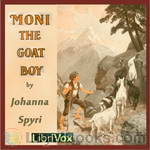 Moni the Goat-Boy
Moni the Goat-Boy
Moni is the goat boy who takes care of all the goats belonging to the people of Fideris, Switzerland. He loves to sing, yodel, and whistle while he romps with the goats all day long on the mountains. His favorite is a young kid named Mäggerli. One day Moni comes across a serious situation where he must keep a deceitful secret in order to protect Mäggerli from being killed. Will Moni risk the life of Mäggerli and tell the truth? This delightful short story teaches children that to trust God and do right is always better than being deceitful. | |
 What Sami Sings With The Birds
What Sami Sings With The Birds
Old Mary Ann has done her best to bring up her son on her own. Like other relatives, her son has a longing to travel off over the mountains. Mary Ann goes with him. Later on her son marries, but loses his wife after she gives birth to their son. Mary Ann assumes responsibility of her grandson, while her son moves away in the agony of his grief. This is the story of what happens to her grandson and where his Grandmother, the songs of the birds, and his faith leads him. | |
 Rose Child
Rose Child
The story of a little girl in the village of Wildbach, who loved the roses, and how spreading both her roses and her love touched the hearts of the villagers. | |
By: John A. Joyce | |
|---|---|
 Shakspere: Personal Recollections
Shakspere: Personal Recollections
Recording of Shakspere: Personal Recollections, by John A. Joyce.A fictitious account of a "friend" of William Shakespeare, who accompanies him from his birth to his death and beyond, chronicling Shakespeare's life, adventures, speeches, and impromptu bursts of poetry. | |
By: John Ackworth (1854-1917) | |
|---|---|
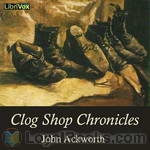 Clog Shop Chronicles
Clog Shop Chronicles
John Ackworth was the pen name of the Rev. Frederick R. Smith, a Methodist minister who was born in Snaith, Yorkshire, but spent much of his career as a circuit preacher in Lancashire. Clog Shop Chronicles was the first and most successful of his works. Set in the fictional 19th-century village of Beckside (said to be somewhere between Manchester and Bolton), the book consists of 12 tales of everyday life in a close-knit Methodist community, which continue into Beckside Lights (1897) and Doxy Dent (1899)... | |
 Beckside Lights
Beckside Lights
John Ackworth was the pen name of the Rev. Frederick R. Smith, a Methodist minister who was born in Snaith, Yorkshire, but spent much of his career as a circuit preacher in Lancashire. Beckside Lights is the sequel to his popular collection of stories Clog Shop Chronicles. Set in the fictional village of Beckside (said to be somewhere between Manchester and Bolton), the book consists of 12 tales of everyday life in a close-knit Methodist community, which continue with a third volume, Doxy Dent (1899)... | |
 Doxie Dent
Doxie Dent
Following the short story collections, Clog Shop Chronicles and Beckside Lights, John Ackworth completed the adventures of clogger Jabez Clegg and his Beckside cronies with a novel. Jabez's niece, the young and vivacious Doxie Dent, has grown up in 'Lunnon'. Arriving in the Lancashire village that is cloggers home, she delights the villagers with her southern ways, but Jabez remains unimpressed... | |
By: John Addington Symonds (1840-1893) | |
|---|---|
 A Problem in Modern Ethics
A Problem in Modern Ethics
“Society lies under the spell of ancient terrorism and coagulated errors. Science is either wilfully hypocritical or radically misinformed.” John Addington Symonds struck many an heroic note in this courageous (albeit anonymously circulated) essay. He is a worthy Virgil guiding the reader through the Inferno of suffering which emerging medico-legal definitions of the sexually deviant were prepared to inflict on his century and on the one which followed. Symonds pleads for sane human values in... | |
By: John Bell Bouton | |
|---|---|
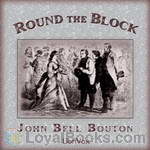 Round the Block
Round the Block
In Round the Block (1864), John Bell Bouton, a newspaper editor who later became a travel writer, stirs together comedy and pathos to explore the schemes and dreams of the average and extraordinary people inhabiting and intermingling on a single New York City block. In the path of the novel's circumambulation lie mystery, romance, and a murder trial, as love-matches and fortunes are made and lost through invention, speculation, and flimflam - plenty of flimflam. This richly-charactered novel, told with Dickensian brio, offers a fascinating slice of life, vivid in detail, of the bustling big-city habits and mores of America shortly before the Civil War. (Introduction by Grant Hurlock) | |
By: John Buchan (1875-1940) | |
|---|---|
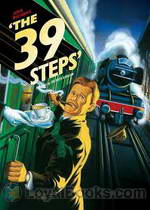 The Thirty-nine Steps
The Thirty-nine Steps
The typical action hero with a stiff upper lip whose actions speak louder than his words, a mysterious American who lives in dread of being killed, an anarchist plot to destabilize Greece, a deadly German spy network, a notebook entirely written in code, and all this set in the weeks preceding the outbreak of World War I. The Thirty-nine Steps, by John Buchan is a spy classic entirely worthy of its genre and will delight modern day readers with its complicated plot. It is also notable for being the literary progenitor of the spook novel that typically features the secret operative on the run, determined to unravel a world domination plot... | |
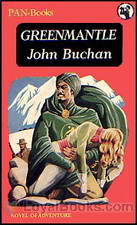 Greenmantle
Greenmantle
Greenmantle is the second of five Richard Hannay novels by John Buchan, first published in 1916 by Hodder & Stoughton, London. It is one of two Hannay novels set during the First World War, the other being Mr Standfast (1919); Hannay’s first and best-known adventure, The Thirty-Nine Steps (1915), is set in the period immediately before the war started. – Hannay is called in to investigate rumours of an uprising in the Muslim world, and undertakes a perilous journey through enemy territory to meet up with his friend Sandy in Constantinople. Once there, he and his friends must thwart the Germans’ plans to use religion to help them win the war, climaxing at the battle of Erzurum. | |
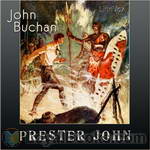 Prester John
Prester John
This classic adventure novel by the author of Greenmantle and The Thirty-Nine Steps relates the first-person exploits of young David Crawfurd before the age of twenty. | |
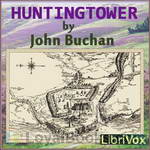 Huntingtower
Huntingtower
Dickson McCunn, a respectable, newly retired grocer, plans a walking holiday in the hills of south-west Scotland. He meets a young English poet and finds himself in the thick of a plot involving the kidnapping of a Russian princess, who is held prisoner in the rambling mansion, Huntingtower. This modern fairy-tale is also a gripping adventure story. | |
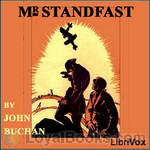 Mr. Standfast
Mr. Standfast
This is the third of Buchan's Richard Hannay novels, following The Thirty-nine Steps and Greenmantle. Set, like Greenmantle, durinig World War I, it deals Brigadier-General Hannay's recall from the Western Front, to engage in espionage, and forced (much to his chagrin) to pose as a pacifist. He becomes a South African conscientious objector, using the name Cornelius Brand. Under the orders of his spymaster, Sir Walter Bullivant, he travels in the book through England to Scotland, back to the Western Front, and ultimately, for the book's denouement, into the Alps... | |
 Power-House
Power-House
The Power-House is a novel by John Buchan, a thriller set in London, England. It was written in 1913, when it was serialised in Blackwood's Magazine, and it was published in book form in 1916. The narrator is the barrister and Tory MP Edward Leithen, who features in a number of Buchan's novels. The urban setting contrasts with that of its sequel, John Macnab, which is set in the Scottish Highlands. The Power-House of the title is an international anarchist organization led by a rich Englishman named Andrew Lumley... | |
 Three Hostages
Three Hostages
The Three Hostages is the fourth of five Richard Hannay novels. The Richard Hannay novels are action/mystery/spy novels with a James bond feel. This book starts out with Richard Hannay married to Mary Lamington living in Fosse Manor. He is asked to work undercover and figure out who kidnapped three children of prominent people, while Scotland Yard investigate the abductions officially. Different friends help him solve the mystery. It's suspenseful and a fun action packed mystery! - Summary by Kimberly Shoemaker | |
By: John Bunyan (1628-1688) | |
|---|---|
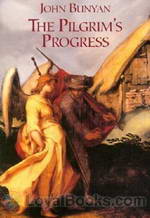 The Pilgrim's Progress
The Pilgrim's Progress
A journey that takes the hero, Christian, through the varied landscapes that constitute life and through the events that happen to human beings is the plot of The Pilgrim's Progress by John Bunyan. Readers who have read and loved Louisa May Alcott's Little Women would recall the many references to this 17th century work of religious fiction. The Pilgrim's Progress is based on several values based in the teachings of Christianity. The importance of using the Bible as a guiding principle in life, of traveling not just geographically but also spiritually, the emphasis on community living and of the companionship of fellow people and many other themes... | |
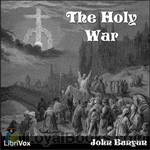 The Holy War
The Holy War
The Holy War is perhaps John Bunyan’s second most popular work, after The Pilgrim’s Progress. It tells the story of afierce battle to take control of a city from its rightful ruler. | |
By: John Burroughs (1837-1921) | |
|---|---|
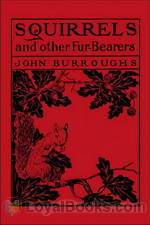 Squirrels and other Fur-Bearers
Squirrels and other Fur-Bearers
Squirrels and other Fur-Bearers, a collection of essays by American naturalist and essayist, John Burroughs, provides fascinating insight into the daily life of small woodland creatures. Included in these essays are Burrough’s personal observations of squirrels, rabbits, mink, and chipmunks, as well as numerous other small mammals. Highly recommended for anyone, both young and old, with an interest in nature and wildlife! | |
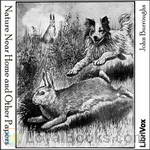 Nature Near Home and Other Papers
Nature Near Home and Other Papers
Nature Near Home is one of many books on natural history by John Burroughs. It is full of simple observations about rural scenes and charming stories about animals, plants, and even people! Burroughs loves the creatures around him and derives great pleasure from his walks and studies in nature’s scenes. | |
By: John C. Hutcheson (1840-1897) | |
|---|---|
 The Ghost Ship
The Ghost Ship
This book intentionally veers in and out of the supernatural, as the title implies. The officers get more and more bewildered as they work out their position, and yet again encounter the same vessel going in an impossible direction. Having warned you of this, I must say that it is a well-written book about life aboard an ocean-going steamer at about the end of the nineteenth century. | |
By: John Charles Dent (1841-1888) | |
|---|---|
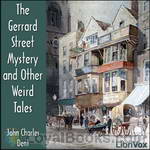 The Gerrard Street Mystery and Other Weird Tales
The Gerrard Street Mystery and Other Weird Tales
John Charles Dent, the author of the following remarkable stories, was born in Kendal, Westmorland, England, in 1841. His parents emigrated to Canada shortly after that event, bringing with them, of course, the youth who was afterwards to become the Canadian author and historian. Mr. Dent received his primary education in Canadian schools, and afterwards studied law, becoming in due course a member of the Upper Canada Bar. He only practised for a few years, then returned to England to pursue a literary career, writing mostly for periodicals... | |
By: John D MacDonald (1916-1986) | |
|---|---|
 Bullet for Cinderella
Bullet for Cinderella
HER VENEER WAS BIG CITY ... But one look and you knew that Toni Raselle's instincts were straight out of the river shack she came from. I watched her as she toyed with the man, laughing, her tumbled hair like raw blue-black silk, her brown shoulders bare. Eyes deep-set, a girl with a gypsy look. So this was the girl I had risked my life to find. This was the girl who was going to lead me to a buried fortune in stolen loot. | |
By: John Dos Passos (1896-1970) | |
|---|---|
 Three Soldiers
Three Soldiers
Three Soldiers, the second novel by John Dos Passos, follows the experiences of several young Americans thrown into the confusion and brutality of World War I.Written when the author was just twenty-three, it was key to the development of a realistic depiction of war in American literature, and earned Dos Passos, later named by Jean-Paul Sartre "the greatest living writer of our time", important early attention.Critic H L Menken said of it: "no war story can be written in the United States without challenging comparison with it--and no story that is less meticulously true will stand up to it... | |
By: John Fox. Jnr. | |
|---|---|
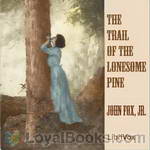 The Trail of the Lonesome Pine
The Trail of the Lonesome Pine
The Trail of the Lonesome Pine is a 1908 romance novel/western novel written by John Fox, Jr. The novel became Fox’s most successful, and was included among the top ten list of bestselling novels for 1908 and 1909. Set in the Appalachian Mountains at the turn of the twentieth century, a feud has been boiling for over thirty years between two influential mountain families: the Tollivers and the Falins. The outside world and industrialization, however, is beginning to enter the area. Coal mining begins to exert its influence on the area, despite of the two families feuds... | |
By: John Galsworthy (1867-1933) | |
|---|---|
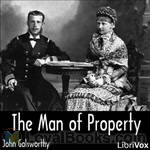 The Man of Property
The Man of Property
The first book in Galsworthy’s trilogy, The Forsyte Saga, The Man of Property revolves around the lives of the Forsytes, a self-conceited and cold family, who place a high value on propagating money and rising from their yeoman roots. The novel chronicles the events that lead to their inevitable demise, which is instigated by the stuffy man of property, Soames Forsyte, as he pursues the ideals of the preceding generation, whilst maintaining his own obsession with ownership. At the same time, Galsworthy candidly criticizes the values of the upper-middle classes, by means of satire, irony, a mixed array of realistic characters, an evocative setting, and an intricate plot... | |
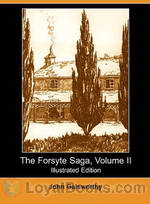 In Chancery (Vol. 2 of The Forsyte Saga)
In Chancery (Vol. 2 of The Forsyte Saga)
‘The Forsyte Saga’ is the story of a wealthy London family stretching from the eighteen-eighties until the nineteen-twenties. In Chancery is the second book in the saga. Five years have passed since Irene left Soames and the death of Bosinney. Old Jolyon meets Irene and is enchanted by her. At his death he leaves her a legacy sufficient for her to live an independent life in Paris. Soames, who is desperate for a son, attempts to effect a rapprochement but is rejected by her. Meanwhile Young Jolyon, now a widower who is Irene’s trustee, falls in love with her... | |
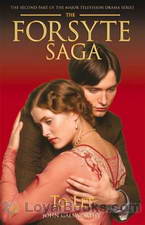 To Let (Vol. 3 of The Forsyte Saga)
To Let (Vol. 3 of The Forsyte Saga)
‘The Forsyte Saga’ is the story of a wealthy London family stretching from the eighteen-eighties until the nineteen-twenties. To Let is the third and final book in the saga (although Galsworthy later published two further trilogies which extend the story). We are now in 1920, about twenty years since Irene married Young Jolyon and gave birth to John and since Soames married Annette, who gave him a daughter, Fleur. The two sides of the family have not met since those times and John and Fleur do not even know of each other’s existence... | |
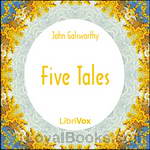 Five Tales
Five Tales
This 1918 book consists of five short stories or novelettes by Galsworthy. They are The First and Last (1914), A Stoic, The Apple Tree (1916), The Juryman, Indian Summer of a Forsyte (1918) This last became part of the trilogy The Forsyte Saga. (Introduction by David Wales) | |
 Beyond
Beyond
Gyp, the daughter of ex-Major Charles Claire Winton, at the age of 23 marries Fiorsen, a Swedish violin virtuoso. Her mother, the wife of another man, has been Winton's mistress; she had died when Gyp was born. A highly sensitive child, Gyp has grown up in isolated surroundings with a kind, but very British, father. As she gets older her father tries to introduce her into society. An attack of gout takes him to Wiesbaden for a cure and, as he never goes anywhere without her, she accompanies him... | |
 Skin Game
Skin Game
A small play in three acts. A kind of comic tragedy. The plot tells the story of the interaction between two very different families in rural England just after the end of the First World War. Squire Hillcrist lives in the manor house where his family has lived for generations. He has a daughter, Jill, who is in her late teens; and a wife, Amy, as well as servants and retainers. He is "old money", although his finances are at a bit of low ebb. The other family is the "nouveau riche" Hornblowers,... | |
 Dark Flower
Dark Flower
Galsworthy's classic The Dark Flower is a study of love. Spring is the beginning when all is new and full of hope. However, the woman Lennan has fallen for is out of reach, a forbidden love. Can he overcome the challenges? As he matures, he discovers two different loves: the first is platonic, comfortable, and one that can last a lifetime. The other is crazy, passionate, and dangerous. As he matures, he settles into a somewhat boring and safe marriage, but then excitement and danger re-emerge in the form of a young mistress... | |
By: John Habberton | |
|---|---|
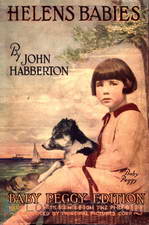 Helen's Babies
Helen's Babies
Harry Burton, salesman of white-goods, bachelor of twenty-eight leads a charmed existence. A letter from his sister, Helen changes his life forever. She and her husband have been invited for a holiday but they can't find anyone to baby-sit their two toddlers, five-year-old Budge and three-year-old Toddie. Ever the gallant helpful, Harry steps in, foreseeing nothing but a relaxed vacation with lots of books to read and thinks baby-sitting's a breeze. But destiny has other plans. Harry has long adored a lovely lady from afar and hopes to convince her that he is marriage material by displaying his nurturing side... | |
By: John Jacob Astor IV (1864-1912) | |
|---|---|
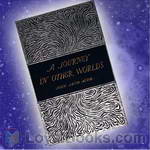 A Journey in Other Worlds: A Romance of the Future
A Journey in Other Worlds: A Romance of the Future
A Journey in Other Worlds: A Romance of the Future is a science fiction novel by John Jacob Astor IV, published in 1894. The book offers a fictional account of life in the year 2000. It contains abundant speculation about technological invention, including descriptions of a world-wide telephone network, solar power, air travel, space travel to the planets Saturn and Jupiter, and terraforming engineering projects — damming the Arctic Ocean, and adjusting the Earth’s axial tilt (by the Terrestrial Axis Straightening Company)... | |
By: John Jeffery Farnol (1878-1952) | |
|---|---|
 Broad Highway
Broad Highway
Our hero, Peter Vibart, an Oxford graduate with no means of support but for 10 guineas he has inherited, sets out on a walking tour of the Kent countryside. Along the way, he meets many quaint and adoring characters as well as a few ne’er-do-wells, meets with several disasters and triumphs, and eventually he meets "The Woman," who leads him to even more disasters and triumphs. (Introduction by John Lieder)Proof-listened by Dawn Larsen and BainbridgeCatherine. | |
By: John Kendrick Bangs (1862-1922) | |
|---|---|
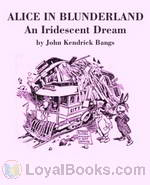 Alice in Blunderland: an Iridescent Dream
Alice in Blunderland: an Iridescent Dream
John Kendrick Bangs (May 27, 1862 – January 21, 1922) was an American author and satirist, and the creator of modern Bangasian Fantasy, the school of fantasy writing that sets the plot wholly or partially in the afterlife. (Wikipedia)Plot summary: J K Bangs has taken Alice from Lewis Carroll’s “Alice in Wonderland” and lets her on a boring day travel with the Mad Hatter, the March Hare, the Cheshire Cat and the other of Carroll’s familiar characters to Blunderland. The story is a well written Satire, a witty, humorous tale of adventure and city politics, a tale of Alice in a land where nothing is as it should be. (Summary by Lars Rolander) | |
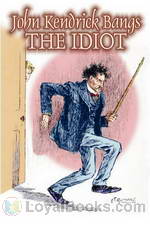 The Idiot
The Idiot
The Idiot is anything but, yet his fellow boarders at Mrs. Smithers-Pedagog’s home for single gentlemen see him as such. His brand of creative thought is dismissed as foolishness yet it continues to get under their skin, because when you’re beneath contempt you can say what you please. – This is the first of John Kendrick Bangs' “Idiot” books and was published by Harper and Brothers in 1895. | |
 A House-Boat on the Styx
A House-Boat on the Styx
The premise of the book is that everyone who has ever died (up until the time in which the book is set, which seems to be about the time of its publication) has gone to Styx. This does not appear to be the conventional Hell described by Dante in The Inferno, but rather the Hades described in Greek myth (both of which had Styxes): a universal collecting pot for dead souls, regardless of their deeds in life. The book begins with Charon, ferryman of the Styx (in The Inferno, he was the ferryman of the river Acheron) being startled—and annoyed—by the arrival of a house boat on the Styx... | |
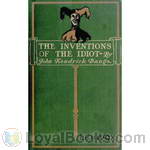 The Inventions of the Idiot
The Inventions of the Idiot
"It was before the Idiot's marriage, and in the days when he was nothing more than a plain boarder in Mrs. Smithers-Pedagog's High-class Home for Single Gentlemen, that he put what the School-master termed his "alleged mind" on plans for the amelioration of the condition of the civilized." This humorous story by the editor of Puck magazine describes how the Idiot sets out to improve the lot of civilized man through his inventions - the lot of barbarian man already being well tended to by missionaries and other do-gooders. | |
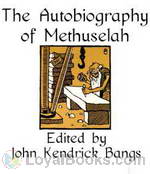 The Autobiography of Methuselah
The Autobiography of Methuselah
A satirical look at early biblical events from the point of view of someone who was there to witness most of them: the oldest man in recorded history. | |
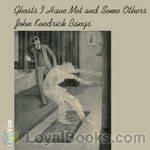 Ghosts I Have Met and Some Others
Ghosts I Have Met and Some Others
New York-born John Kendrick Bangs was associate editor and then editor of Life and Harper magazines, eventually finding his way into the Humour department. Here he began to write his own satire and humour. Ghosts I Have Met and Some Others is a delightfully humourous collection of short tales relating encounters with ghosts. | |
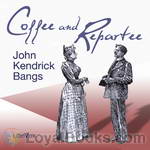 Coffee and Repartee
Coffee and Repartee
First released in 1893, Coffee And Repartee is a collection of breakfast chats at a gentlemans boarding house run by a Mrs. Smithers. Here these fellows repeatedly face questions and proclamations by an inhabitant they call The Idiot. The discussions sound friendly under pretense, but are really sly battles of ribald wit and cunning charm, as well as rather offensive remarks during a time period considered by many to favour a height of refined etiquette. The Idiot spars well, but will the other residents get the better of him? | |
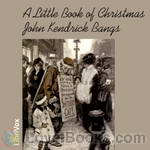 A Little Book Of Christmas
A Little Book Of Christmas
Summary: Four short Christmas stories, a bit sentimental, but still affecting and worthwhile. Plus Four Christmas verses. (Summary by David Wales) | |
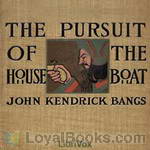 The Pursuit of the House-Boat
The Pursuit of the House-Boat
This sequel to Bangs' A House-Boat on the Styx continues the "thought-experiment" of bringing various historical and fictional figures together, detailing the adventures of the ladies of Hades after they are kidnapped by pirates and the attempts of the Associated Shades (led by Sherlock Holmes) to retrieve their house-boat. (Introduction by Emma Joyce) | |
 R. Holmes and Co.
R. Holmes and Co.
Raffles Holmes is introduced in these stories as the son of the great Sherlock Holmes. He is also revealed to be the grandson of A.J. Raffles, a gentleman thief pursued by Sherlock Holmes many years earlier. This apparently contradictory family background sets the stage for his colorful and amusing adventures. | |